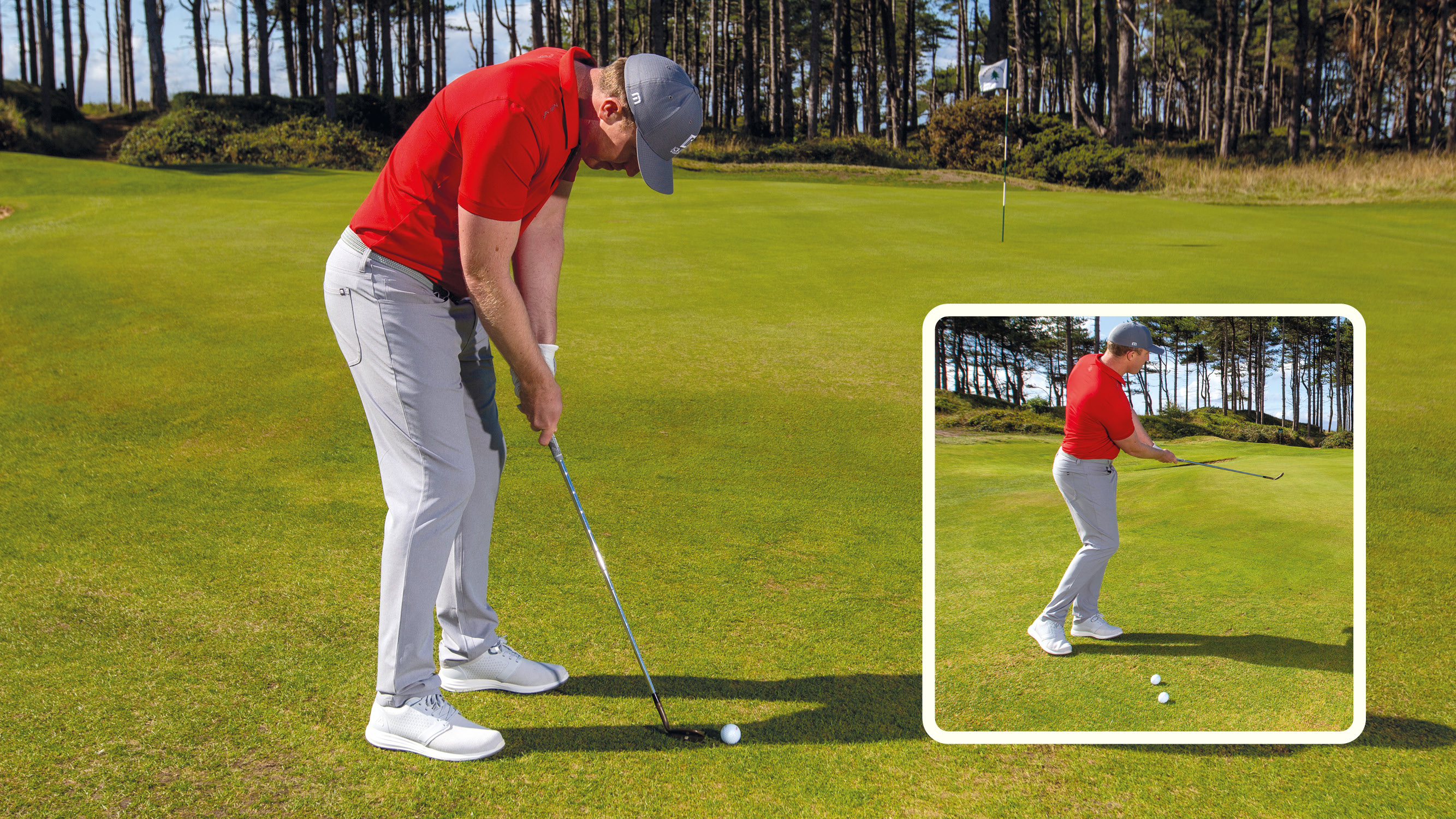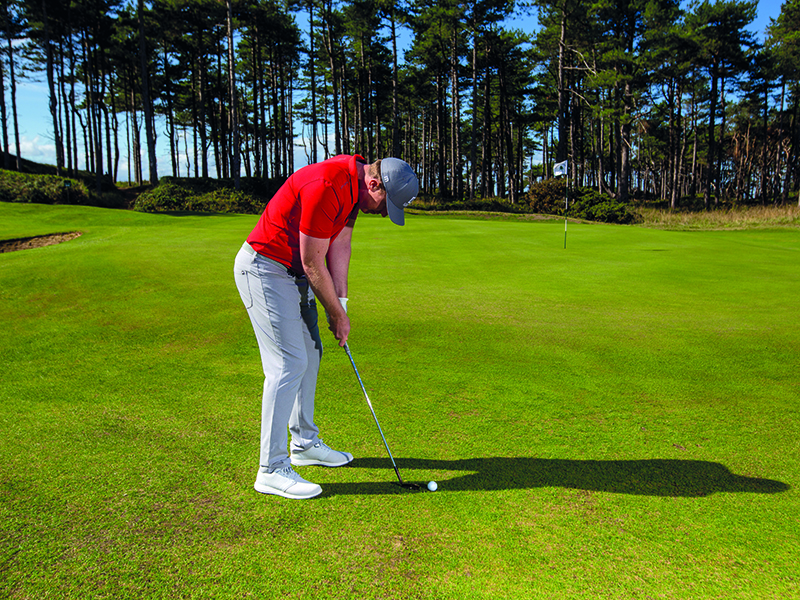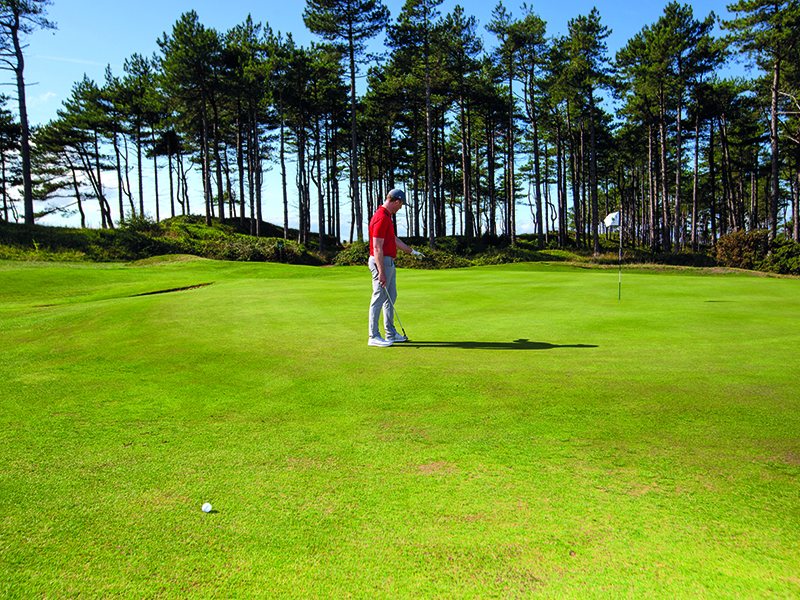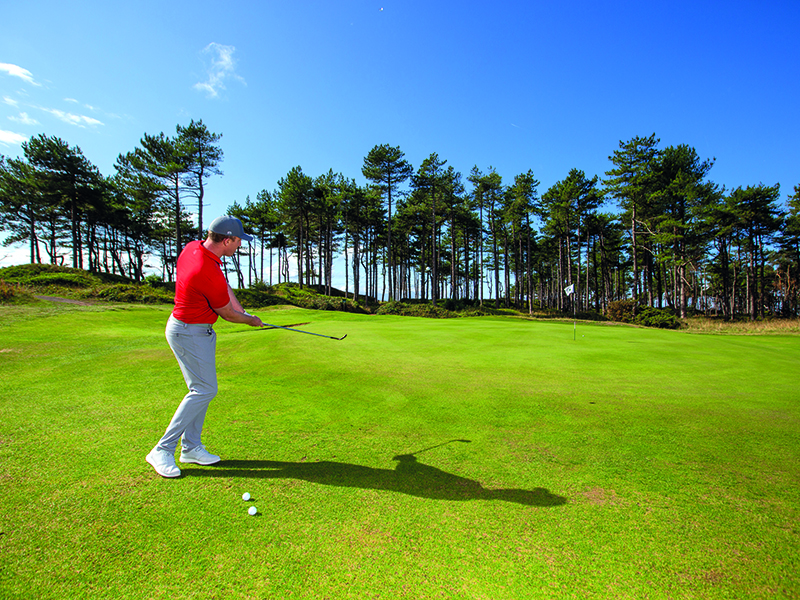
Learning how to chip in golf is a fundamental component for progress in the sport, leading the way to understanding how to spin the golf ball and how to master different styles of shot like the chip and run.
It's important to give your short game some love and attention, however, as bad habits lurk for those who neglect it. Without the right amount of practice, and time spent on the best chipping drills, it's easy to allow common faults to eek into your short game.
In this article, Golf Monthly Top 50 Coach John Howells talks us through a chip shot fault that could be killing your short game and offers some expert advice to get you back on track...
The Chip Shot Fault That Could Be Killing Your Short Game
This (image below) is a posture I see a lot, particularly when players start getting nervous about the strike – they become ‘ball locked’. They are so worried about making good contact – mainly not fluffing it just a couple of yards – that they hunch over the ball and focus entirely on the ground, with little or no attention given to the target. Because they’re so focused on the ball, they tend to make contact with the ground and stop, as opposed to turning the hips and chest towards the target.

The great Seve was one of those who talked a lot about staring at the target and glancing at the ball, instead of staring at the ball and glancing at the target – which is what a lot of amateurs do.
In the image below, I’ve gone onto the green to pick my landing spot; I’m building a picture of the shot in my mind. I go back to the ball and take four or five practice swings looking at my landing spot – not the ball.

Yes, you have to have an awareness of the ground, but not to the point that you become so fixated on it that you prevent yourself from turning the hips and chest through to a nice finish.

If it helps you to focus more on the target as opposed to the strike, think about how far you want to land the ball towards it. Generally speaking, you could use a lob wedge to carry it 75% of the way, with 25% roll; 50/50 with a pitching wedge; and 25% carry and 75% roll with an 8-iron.
It depends on the speed of the greens and how firm they are, of course, but these percentages would be a good baseline to start from.







